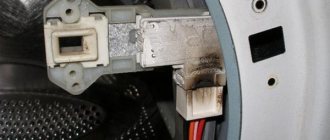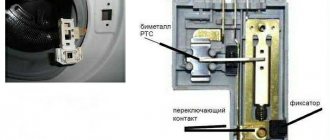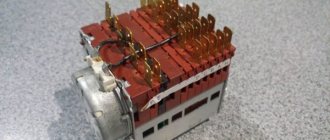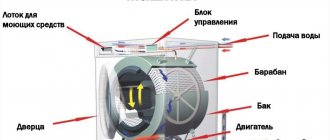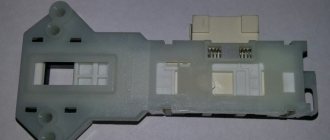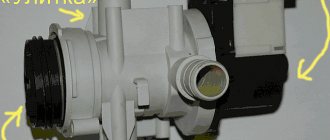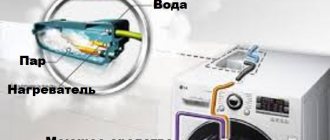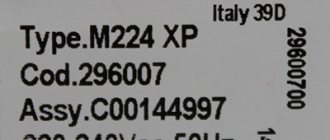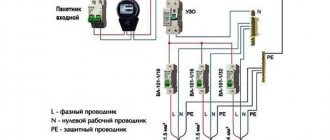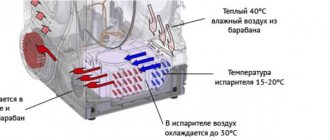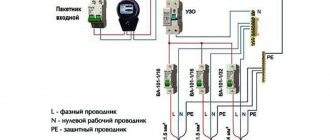When choosing a home assistant, we are usually guided not only by appearance, but also by technical characteristics. And the engine of a washing machine is one of the important parameters that deserves close attention, don’t you agree?
We suggest you understand the performance characteristics, specifics of the design and functioning of different types of motors - for an objective assessment, we conducted a comparative analysis of the operating parameters of the engines.
In addition, they told us how to diagnose the engine, and also outlined the rules for connecting and operating the washing machine, compliance with which will extend the life of the home assistant.
Engine types
There are three main types of motors used in modern washing machines:
- Asynchronous motor. Rarely used in washing machines, as it has high energy consumption - one act of washing becomes unreasonably expensive. Motors of this type are characterized by high resistance to voltage surges and have a long service life.
- Commutator motor. Installed on most washing machines, has good technical characteristics, low cost, and efficiency. Manufacturers promise up to 10 years of operation for such motors.
- Direct drive motor (no drive belt required). The motor is complex and it is highly not recommended to carry out independent work. Used on LG machines. The manufacturer provides a 10-year warranty on the motor.
The motor type is indicated in the technical documentation for the washing machine.
Brushed motors
The majority (approximately 80%) of washing machines popular among Russians have a collector
engine.
Such motors are universal, since they can operate on both alternating and direct current.
The commutator motor consists of:
- stator,
- collector rotor,
- rotation speed generator (tachogenerator),
- brushes (usually two),
- housings.
Commutator motors have a relatively short service life. If the machine has already worked longer
8-10 years, probably for its electric motor:
- the brushes are worn out,
- the lamellas overheated and peeled off,
- a short circuit has occurred in the rotor or stator winding.
Brushes, commutator lamellas and winding
- these are three elements, the wear of which provokes a malfunction of the commutator motor, and, accordingly, incorrect rotation of the washing machine drum.
Another distinctive feature of commutator motors is that they can be checked and even repaired yourself.
However, the risk of aggravating the situation is very, very high. In addition, special knowledge, tools and experience will be required. Minimal knowledge of technical devices is not enough. You need to understand electricity.
Asynchronous and brushless motors are more complex in design; they cannot be checked, much less repaired at home by a non-professional.
How to remove the engine
The motor is located in the back of the washing machine under the tank; to dismantle it you will need to remove the back cover. The next step is to remove the drive belt and unscrew the retaining bolts that secure the motor to the tank and frame of the machine. To freely remove the motor, it is worth lifting the tank slightly. If access to the motor is difficult, you must remove the bur wall of the washing machine. There may be mounting bolts on the side, since the fastening system in different washing machines may differ.
How to change brushes?
With a probability of 80%, it can be said that the breakdown of the commutator motor is associated with its brushes. The service life of brushes is about 3–5 years. If the washing machine is used intensively, replacement may be required even earlier - after two years. That is why the famous Korean company switched to inverter motors. This makes SMA more expensive, but also many times more reliable.
Any home craftsman can change the brushes. Taking into account the time required to dismantle the engine, the entire repair process will take at most half an hour. You can invite a specialist, but the service will cost you about 2,500 rubles. Yes, you will have to pay 500 rubles for the brushes. The asking price is 3000 rubles. But you can save money by replacing worn-out parts yourself:
- Having disconnected the wiring from the terminal, press the contact to pull out the brush.
- Assess the degree of wear of the element. Need to change? Then take a new spare part and put it in place. Lower the contact and connect the terminal.
For some time, the ED operates a little noisily while the new brushes are being ground in.
Identifying damaged engine components
A significant advantage of commutator motors is their simplicity. Vulnerable places that can fail are:
- Winding;
- Lamels;
- Brush.
At the first stage of testing the engine's performance, it is worth starting it. To start a commutator motor, you need to alternately connect the stator and rotor windings and connect a power source to the unused connectors. If all is well, the shaft should start to rotate. When the motor is running, problems with the brushes can be identified. If they are damaged or heavily worn, the winding begins to spark strongly. If the machine is in use for a long period, then worn brushes are easy to notice with the naked eye (they are much thinner and smaller in size).
Working brushes must be of normal size without chips or cracks. If the problem is still with the brushes, then it is necessary to select only original components, which will increase the service life of the motor.
What types of electric motors are there in LG SMA?
Before you start repairing an electric motor with your own hands, you need to find out what the source of the problem is. The Korean brand LG has equipped its latest models with inverter motors, which have a whole range of advantages:
- Due to the absence of brushes and other elements that wear out due to friction, they are much more reliable - they rarely have problems.
- They quickly pick up speed.
- Maintain stable speed.
- Their work is almost silent.
The manufacturer is so confident in inverter motors that it provides a ten-year warranty on them. In some models, the warranty on the electric motor reaches 15 years. The predecessors of inverter electric motors are collector analogues, which, having rubbing parts, are more prone to breakdowns.
Winding check
The following “symptoms” may indicate problems with the stator and rotor windings:
- The engine is not running at full power;
- Motor heating;
- Noise during operation;
- Unpleasant burning smell.
Diagnosis of problems in the winding is carried out using a multimeter, which must be switched to ohmmeter mode. The probes of the device are sequentially connected to adjacent lamellas. If the resistance exceeds 0.5 Ohm, then this indicates a short circuit between the turns of the winding. It is worth taking a closer look at the lamellas because short circuits form carbon deposits on their surface. A winding break is also possible.
The proper operation of the rotor is checked in a similar way. Then the closure of all windings is checked. To do this, attach one ohmmeter probe to the body, and the second one to the lamellas in turn. If everything is in order with the windings, then the resistance will be tens and hundreds of megaohms.
It is easy to diagnose lamella wear. To do this, you need to remove the rotor from the engine body and inspect it. A professional will immediately determine whether the slats are peeling off or not.
Types and features of engines
Washing machines use 3 main types of motors: commutator, inverter, and asynchronous. They differ from each other technically and functionally, and have their pros and cons. Let's look at each type in detail.
Type #1 - small and budget collector
Most washing machines on the market are equipped with a commutator motor. Its design is an aluminum case, inside of which there is a rotor, stator, tachometer and two brushes.
The latter are placed in the device to ensure contact between the motor and the rotor. Through them, current is supplied to the armature, a magnetic field is formed, which starts rotation. The network voltage significantly affects the speed of this rotation.
The commutator motor is located at the bottom of the machine structure and is connected to the drum pulley by a belt. Brushes and belt are considered design flaws. The brushes wear out over time, the belt needs to be replaced as it wears out and stretches over time.
The presence of electric brushes distinguishes this type of motor from the rest: they rustle or rustle in a peculiar way while the washing machine is operating
Advantages of the mechanism:
- operates on direct and alternating current;
- small in size;
- easy to repair if a breakdown occurs;
- simple electrical control circuit.
To overcome the frictional force of the belt, the entire mechanism expends more energy. This leads to low efficiency due to increased electricity consumption.
But the statement is quite controversial, because the main consumption comes from the heating element, and not from the engine. Real savings compared to the next type are 2-5%.
Type #2 - innovative and compact inverter
Washing machines began to be equipped with inverter motors in 2005. The development of this variety belongs to LG; for a long time, innovation provided the manufacturer with leadership in the market.
Samsung , Bosch , AEG , Whirlpool , Haier began to use inverter motors .
The inverter is built into the drum of the washing machine; it consists of a cover with permanent magnets (rotor) and a cage with coils (stator)
What is special about the design? In the absence of a commutator-brush assembly and direct drive. Such an engine is installed directly on the drum and operates without a transmission belt.
The armature in it is assembled on magnets, the voltage is supplied to the stator windings in a form converted by an inverter, so the speed of revolutions can be adjusted and controlled.
Inverter advantages:
- simple and compact design;
- efficiency due to the absence of the need to waste electricity to overcome the friction force in the commutator-brush assembly;
- almost silent;
- there are no quickly wearing elements (brush, belt), so the service life is long;
- low vibration level during spinning;
- the ability to set a higher spin speed.
In some models of machines with an inverter, it is possible to configure the drum rotation modes. This advantage from the manufacturer LG 6 Motion technology . But such washing machines are more expensive, and repairs are expensive due to the price of components.
Type #3 - quiet and simple asynchronous
Such motors are available in two- and three-phase types. The first model is classified as obsolete and in the 21st century it has been discontinued almost everywhere.
The second can be found in early washing machines Bosch , Candy , Miele , Ardo . The rotor of the asynchronous motor is located at the bottom of the washing machine and is connected to the drum by a belt, so they work simultaneously.
The design of an asynchronous washing machine motor includes a rotor that rotates the drum and a stationary stator. Torque is transmitted using a belt
Pros of the model:
- easy to maintain;
- works quietly;
- relatively cheap;
- simple design - easy repair.
The asynchronous motor is unpretentious in maintenance - the user’s main task is to timely replace the bearings and lubricate the motor.
But there are also disadvantages to it. Due to its operating principle, you will not find much power in its characteristics. The torque can be weakened at any time, the drum will stop making full revolutions, and the quality of the wash will deteriorate greatly.
And one more feature - electrical circuits are difficult to manage. With all its advantages, the asynchronous motor has sunk into oblivion; the main competition in the market is between inverters and collectors.
Comparative analysis of models
Data on the type of engine and drive can be found in the machine’s passport. The sales consultant must also have this information. Beforehand, you can compare which engine is best for each list of consumer requirements. But first, let's look at the fraudulent maneuvers of manufacturers of this or that type of engine.
Parameter No. 1. No rubbing parts in the inverter . This is not true, the mechanisms have the same number of bearings, but there are no brushes.
But how long do the brushes that frighten collector buyers so much last? 10-15 thousand hours or up to 15 years of daily work for 2-3 hours a day. At the same time, the guaranteed service life of the machine itself is 7-10 years. And the brushes cost about 5 dollars. In an inverter washing machine, as in a collector washing machine, bearings may need to be replaced.
Washing machine repair statistics show that brushes need to be replaced much less frequently than the heating element, bearings or electronic unit, and the cost of replacing brushes is lower
Parameter No. 2. Noise . Yes, the “brush” motor is noisier, but the inverter also makes a characteristic squeak. The main sound is produced not by the motor, but by the pump paired with the drum. During the spin cycle, the inverter squeaks, reminiscent of a mosquito.
Parameter No. 3. Saving electricity . The inverter consumes up to 20% less electricity than the collector. This occurs due to more precise adjustment of the speed and load on the engine itself.
What does this look like in practice? You are loading an incomplete drum. The collector will spin it up as much as possible, and the inverter will stabilize the speed. But we considered earlier that the savings as a result are insignificant, because the heating element will still spend the full amount of energy on heating.
Conclusion: if noise is not so important and you are ready to constantly care for your washing machine, choose a collector. This type of engine allows you to save a lot on your purchase. If the priority is performance characteristics in terms of power, noiselessness, and durability, it is worth taking a closer look at inverter models.
The manufacturer guarantees it for at least 10 years. But it only applies to the inverter; other parts of the machine may not be very wear-resistant.
Slat repair
Before carrying out repair work, it is worth assessing how much they have peeled off. If the peeling is small within 0.5 mm, then you can turn them on a lathe.
After this, it is necessary to carefully clean the spaces between the lamellas from metal shavings, since they can also cause a short circuit. You need to understand that grooving the lamellas is a temporary solution, since peeling is a consequence, not a cause.
If you do not want to waste time repairing the washing machine motor with your own hands, then contact our service center. Our technician will come to you today and fix everything.
This video will help you understand the intricacies of engine repair more clearly:
The most common causes of engine failure
- Failed electric brushes;
- Broken winding in the rotor and stator;
- Collector lamellas.
Replacing electric brushes
These are conductive graphite cubes with wires that rub against the commutator.
The reason for replacing motor brushes may be:
- loss of rotational force of the drum or its complete stop;
- unusual noise when the washing machine is operating.
The most common cause of failure is tank overload. Also, electric brushes wear out quickly when spinning at maximum speed or due to a short circuit in the turns of the electric motor winding, a problem with the belt that connects the motor to the drum, it can jump off the pulley or break.
A visual inspection of the brushes will also help you understand the need for replacement. If they spark during operation or there is a black coating on the surface, the parts need to be replaced.
Of course, this is an inexpensive engine element, and repairs can be done at home. It is enough to purchase a suitable brush model from a specialized store or service center. The main thing is to choose and replace the brushes on the washing machine correctly; they must fully match the type of motor and it is better if it is an original set from the washing machine manufacturer.
Slats need replacement
This is precisely the component of the commutator along which the electric brushes slide. They transmit current through the rotor winding to the motor. The plates themselves are rarely subject to wear; the cause of failure can be the breaking of the cord in the winding in the places where the lamellas are attached or their detachment.
This happens, most often, also due to improper operation of the device, for example, in a top-loading machine, the washing process was started with the drum flaps open or failure of the bearings.
If the delamination is small, repairs are made on a special machine by grooving the collector. At home, you can get by with simple fine sandpaper. The principle is the same - the lamellas are sharpened, then the space between them is thoroughly cleaned of dust and shavings.
You can check the electric motor for this malfunction by slowly turning the rotor; if a characteristic sound appears, then most likely the reason is in the lamellas.
Open circuit or short circuit in the rotor or stator winding
These are the most common causes of loss of engine power or complete cessation of its operation, which can be a consequence of:
- overheating of the motor housing resulting from short circuits in the winding. The normal temperature should not be higher than 80 degrees; if it rises to 90 degrees, the thermostat is triggered, stopping the engine;
- winding insulation failure. In this case, repairs at a service center are inevitable. Most often the entire engine has to be replaced. Re-winding at home is not recommended.
A break in the winding can be detected using a multimeter in the mode of measuring the resistance between the lamellas. The norm is 0.1-0.4 Ohm.
A breakdown or short circuit in the electric motor of a washing machine can cause a malfunction and failure of other parts of the device, for example the command device (another expensive part of the machine), power triac, and reverse relay. As you can see, the most common causes of breakdowns are non-compliance with operation instructions or instability of the electrical network. To increase service life, it is recommended to use the device according to the instructions, and to protect against power surges, install a circuit breaker and connect the washing machine only through this protective device.
See also:
- 10 best ATLANT washing machines according to customer reviews
- 10 best built-in washing machines
- 10 best washing machines under 15,000 rubles according to customer reviews
- 10 best washing machines under 25,000 rubles according to customer reviews
- 13 best washing machines from 40,000 to 50,000 rubles according to customer reviews
Connecting a new part
Installing a new motor with your own hands will not be difficult if you strictly follow a certain sequence of actions:
We insert the engine precisely selected in terms of power, mounting shape and other technical parameters with bushings into the seats, and fix the housing with fasteners.- We connect the wiring of the power unit (photos or video notes taken earlier will come to the rescue).
- While turning the pulley wheel, carefully tighten the drive belt.
- We install the back panel in its original place and secure it with the mounting bolts.
After the washing machine body is assembled, the device is connected to communications, the power cord is inserted into the socket, and a test wash is started.
Where and at what price can I buy the part?
In order not to make a mistake when choosing a new engine, you need to know exactly the name and model number of the LG washing machine.
The necessary information can be found on a special plate located on the front panel under the hatch door or on the rear wall.
If the plate is worn out and the icons on it cannot be recognized, the model and number of the washing machine can always be found in the passport of the household appliance.
It is better to buy an engine on specialized websites selling spare parts for household appliances (the risks of purchasing low-quality counterfeits are minimal).
The cost of a new motor for an LG washing machine varies from 3,000 rubles. up to 5000 rub .
What if the slats are worn out?
If checking the winding shows that it is working properly, proceed to checking the lamellas. If the lamella is so worn that it can be seen even without testing, then you don’t have to think about repairs - take the engine to scrap. But if the delamination in the lamellas is insignificant - fractions of millimeters - then there is a chance to save the motor. The lamellas are turned using a lathe and returned to their original dimensions. Only a professional turner can do this kind of work. It's inexpensive. After grooving, all that remains is to remove the chips and assemble the electric motor.
In 50% of cases, a faulty commutator motor cannot be repaired on your own - you need the help of a specialist or the repair is generally useless. Therefore, task number one is to correctly diagnose the cause, so as not to waste time and money on unnecessary repairs.
Source
